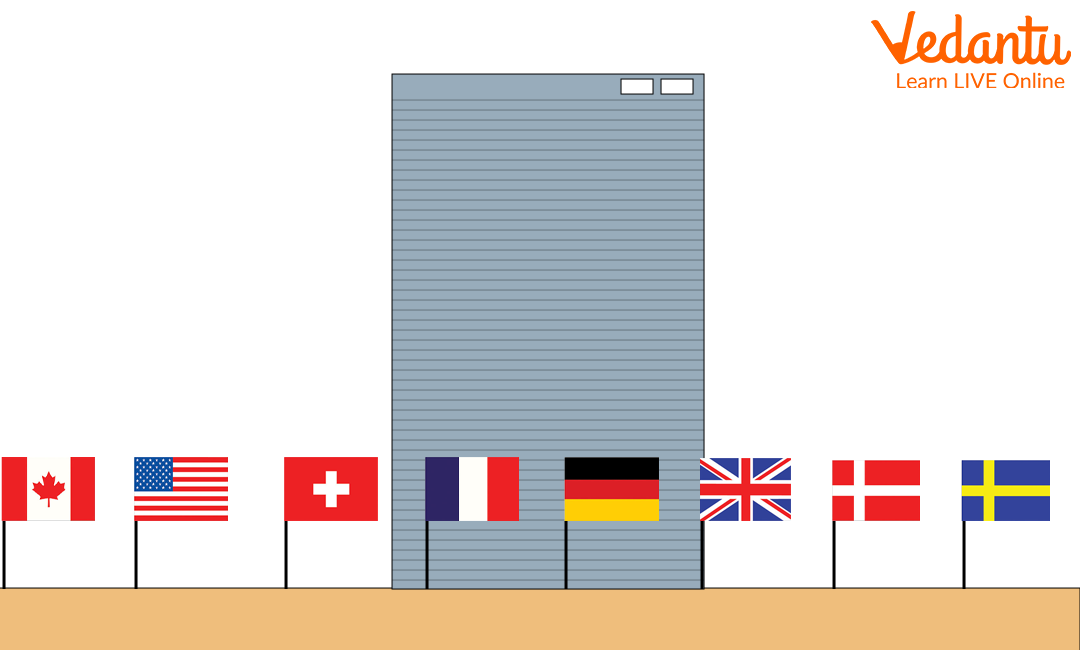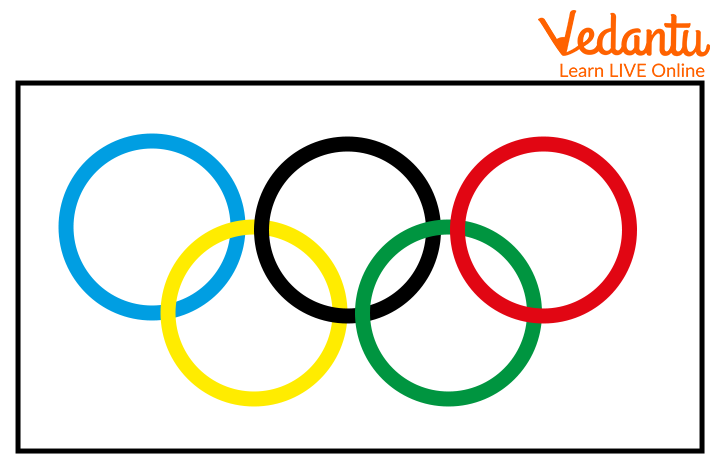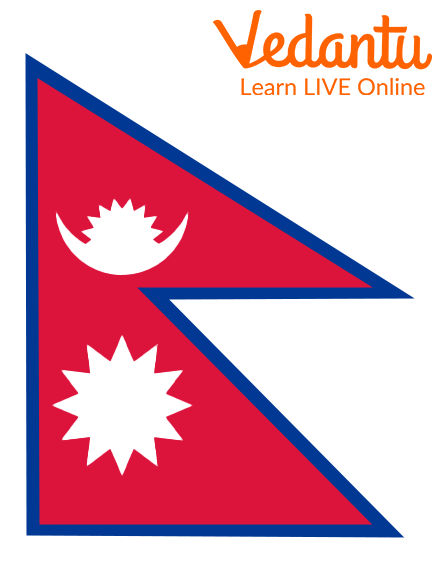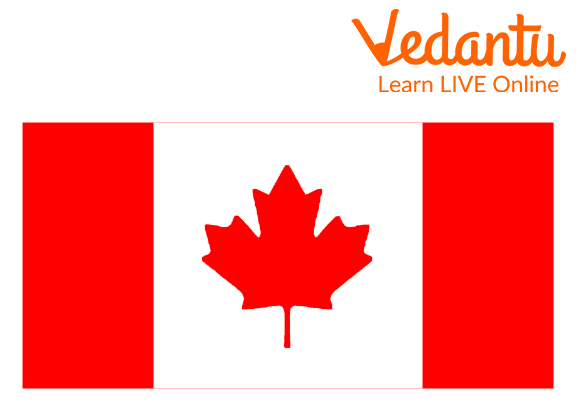




How Do Colors and Symbols on Flags Represent Each Country?
What are the most common symbols on flags? Why are there so many different world flags? What do the colours on the flags mean? There are many such questions. Let us get the full details and the interesting facts for kids about the flags of the world from this article.
Why Did People Start Using Flags?
Let's have a look at why people started using flags in the first place. Certain groups of people decorated spears and other items in prior eras to express their tribe's or community's cultural markers. Later, ribbons, leather, or silk decorations on the spears were used to identify one group from another.
When early explorers and colonists came on the terrain they had never seen before, they always erected crosses or sculptures. Later, flags were employed to announce their presence or demonstrate sovereignty. Countries have continued to alter their flags after attaining independence or regaining confidence in displaying their national emblems on flags. Mauretania's flag was modified in 2017 to feature red colour stripes to represent their people's effort to save their homeland.
Why Do Countries Have Flags?
Flags signify that we are members of a group, organisation, or country and that we share similar values and aims, as well as the same set of rules and regulations. Flags are symbols of a country's identity. As a national symbol, each country has its own flag.

Flags in Front of the United Nations Building
In the 18th century, the first flags were hoisted to signal to others that one:
Rules over the land and people ('proclaim sovereignty') and
Owns a piece of land ('proclaim a possession'),
Here are two examples:
When Neil Armstrong became the first person to set foot on the moon in 1969, he raised an American flag. A photograph of this historic occasion can be seen below.

Neil Armstrong, The First Man on the Moon
In May 1953, Sir Edmund Hillary and Sherpa Tenzing Norgay became the first men to climb to the summit of the world's highest mountain, Mount Everest. When they reached the summit, Sir Edmund Hillary raised the British 'Union Jack' to the peak. This was done, however, not because he was British, but because the expedition was funded and organised in the United Kingdom.
Some Other Important Flags
Let us look at the other important flags to know.

The Olympic Flag
What's in a Flag? What are the Universal Symbols in World Flags? Now, Which Symbols are the Most Used Ones in Flags?
Every culture has its own set of symbols that are significant to them. Some symbols are universal, in the sense that they have the same meaning everywhere. Among these, some are given as follows:
Sun: The circle of the sun symbolises energy and unity.
Japan is known as the "country of the rising sun," and its national flag features the sun. The sun is represented as a circle.
Argentina is another country that uses this powerful symbol.
Moon: To distinguish it from the sun's symbol, the moon is frequently depicted as a crescent. The moon, when combined with a star, denotes divinity and, in particular, Islam.
Tunisia's national flag contains three powerful symbols: a red crescent moon and one red star sitting in a white circle representing the sun, as shown in the image to the right. Turkey and Singapore are two more countries that use this symbol.
Stars: When representing the night sky or a star constellation, constellation of stars sometimes indicate energy.
"Stars and Stripes" is the name of the American flag. Australia, Comoros, New Zealand, and Brazil are among the countries with stars on their flags.
Cross: In ancient times, the cross was only used to represent the different points of the compass; however, in the 4th century, it was also used as a sign of faith.
Denmark, England, Norway, Sweden, Switzerland, and the United Kingdom are among the countries that use this sign.
Triangle: In Christianity, the three points of a triangle signify the Trinity (Father, Son, and Holy Spirit). The triangle is frequently used to represent strength and power.
Bahamas, Cuba, Eritrea, Sudan, American Samoa, and others are among the countries that use this symbol.
Square: The square's four even lengths represent balance and equal opposites.
The Swiss flag is the world's only square flag. Did you know that the reverse flag is used by the international humanitarian organisation 'Red Cross'? On a white background, it features a red cross.
World Flags: Symbols, Shapes and Colours
World flags display a variety of colours and symbols, such as the sun or the moon, as well as cultural emblems, such as the national bird or flags, and in some cases, inscriptions, such as the green flag of Saudi Arabia (see in the image).
Colours and symbols distinguish country flags, and several countries employ shapes other than the traditional rectangular shape for their national flags.

Shape of a Flag
Did you know that Nepal's flag, shown above, is the only one in the world that isn't rectangular or square in shape?

Rectangular Shape of a Flag
Many additional emblems can also be seen on world flags. Canada's flag features a maple leaf, which symbolises the country's concern for nature and the environment. Canada's national tree is the maple tree.
Use of Colours in Flags
Red and white are the prominent colours of most flags around the world, as you can see here. The major colours of most flags are red, blue, and green, with yellow or tertiary colours being used by other countries. Gold is also featured in many flags since it is associated with the sun and is said to be the colour of rulers.
The majority of flags include more than two colours. The following flags are multicoloured:

Multicoloured Flags
So this was the discussion on flags and their significance. We have tried to include an elaborate account of the importance of flags, the significance of the symbols and colours used in them and the different shapes of flags. The readers will also learn about certain flags that do not represent any country but an event or organisation, such as the Olympics or the UN. If you liked reading this article, you can check out more of such interesting topics on our website.
FAQs on Flags of the World: Meanings, Fun Facts & Quick Quiz
1. What does a national flag represent?
A national flag is a powerful symbol that represents a country's sovereignty, identity, and values. Its colours and design often tell a story about the nation's history, geography, culture, and the principles it stands for. It serves as a visual icon for the country, recognised both at home and around the world.
2. What do the common colours on world flags symbolise?
While meanings can vary by culture, some common colour symbolisms on flags include:
Red: Often represents courage, revolution, sacrifice, or blood shed for independence.
White: Typically stands for peace, purity, and honesty.
Blue: Can symbolise freedom, justice, vigilance, or natural features like the sea or sky.
Green: Frequently represents hope, nature, agriculture, or a nation's faith.
Yellow/Gold: Often signifies wealth, sunshine, or generosity.
3. What is the study of flags called?
The study of the history, symbolism, and usage of flags is called vexillology. Someone who studies flags is known as a vexillologist. The term is derived from the Latin word 'vexillum,' which was a type of flag-like standard used by Roman legions.
4. What are some common symbols found on flags and what is their importance?
Flags often feature symbols that hold deep importance for a nation. Common examples include the sun, representing life and energy; the moon and stars, often linked to Islam or celestial guidance; and animals like eagles or lions, which symbolise strength and courage. Geometric shapes like the cross can represent faith, while tools or plants can signify a nation's industry or agriculture.
5. Which country is known to have the oldest continuously used national flag?
The national flag of Denmark, known as the 'Dannebrog', is widely considered the oldest continuously used national flag in the world. According to legend, its origins trace back to the year 1219. Its simple design, featuring a white cross on a red background, has influenced the flags of many other Nordic countries.
6. Why do some countries have very similar flag designs?
Similar flag designs often indicate a shared history, culture, or political alliance. For example, many Arab nations use the Pan-Arab colours (red, black, white, and green) to show solidarity. Similarly, many African nations use Pan-African colours (red, green, and yellow/gold) inspired by Ethiopia's flag. The tricolour design, popularised by France, was adopted by many other countries to symbolise republican ideals of liberty, equality, and fraternity.
7. What makes a flag's design effective or 'good'?
According to vexillology, a good flag design follows a few key principles. It should be simple enough for a child to draw from memory, use meaningful symbolism, employ a limited colour palette (usually 2-3 basic colours), be distinctive from other flags, and avoid lettering or complex seals. An effective flag is easily recognisable even when flying from a distance.
8. Why is Nepal's national flag the only one that isn't a rectangle?
The national flag of Nepal is unique because it is the world's only non-quadrilateral national flag. It is shaped like two stacked triangles, or pennants. This shape traditionally represents the Himalayan Mountains and also the two major religions of the country, Hinduism and Buddhism. The two points also historically symbolised the two ruling dynasties of the nation.
9. How do flags use symbolism to connect to a country's values and history?
Flags are a visual summary of a nation's story and core beliefs. For instance, the 50 stars on the United States flag represent its 50 states, showing unity, while the stripes recall the original 13 colonies. The Ashoka Chakra in the centre of the Indian flag represents the "wheel of law" (dharma), symbolising that there is life in movement and death in stagnation. Each element is deliberately chosen to reflect what the country considers important about its past and its future aspirations.















